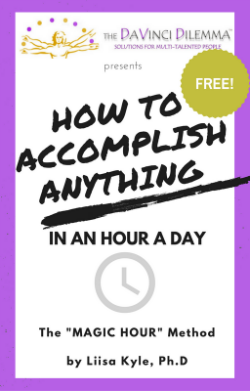
By Brad Flickinger (student_ipad_school – 124) [CC BY 2.0 (https://creativecommons.org/licenses/by/2.0)], via Wikimedia Commons
My husband, for example, is most comfortable either learning from books or figuring it out by himself. When he bought a motorcycle, he took it apart, down to the carcass and rebuilt it so he could understand exactly how it worked. When he encountered challenges during this process, he consulted books and online postings to devise solutions.
In contrast, in the same situation, I would have signed up for motorcycle classes and workshops. My preferred learning style means that I learn best when I can see someone demonstrate exactly how to do something — especially when it comes to acquiring or improving skills. Now I suppose I could pick things up via YouTube clips — pretty much anything you can think of is demonstrated on YouTube — but then it’s up to the viewer to apply it. That’s where courses and workshops can be helpful: they provide the opportunity and structure so that you actually spend time developing your chosen skill and consolidating your new knowledge. It’s also difficult to ask questions of a YouTube video. Bonuses of classwork include things like access and consultation with the expert/teacher plus the interactions with your classmates — people with whom you share common interests. This can support your learning wonderfully and can have all kinds of unexpected consequences. Fun fact: I met Lisa Rothstein (friend and co-founder of The DaVinci Dilemma™) at a workshop. We didn’t attend that session expecting to find a new friend, co-author and business partner, but that’s how things unfolded.
How Do You Like to Learn?
Before we continue, take a moment to think about learning experiences you’d had.
What has worked well for you? (Make a list).
What hasn’t? (Make a list).
If you’re unsure, there are two key models of Adult Learning Styles to consider.
1. David Kolb’s Learning Style Inventory
Kolb’s classic model sorts people according to two factors: First, do you prefer to learn more through active experimentation or through reflective observation? Second, do you tend to like to learn more from concrete experience or from abstract conceptualization? Go ahead and ask yourself each of those two questions right now.
If you answered “active experimentation” and “abstract conceptualization”, you would be labeled a ‘Converger’ in Kolb’s model. You are good at making practical applications of ideas and using deductive reasoning to solve problems.
If you answered “active experimentation” and “concrete experience”, you would be labeled an “Accomodator”. You are good at actively engaging with the world and actually doing things instead of just reading about and studying them.
If you answered “reflective observation” and “concrete experience”, you would be labeled a “Diverger”. You are good at coming up with ideas and seeing things from different perspectives.
If you answered “reflective observation” and “abstract conceptualization”, you would be labeled an “Assimilators” and are capable of creating theoretical models by means of inductive reasoning.
In my opinion, knowing these labels per se are less important that recognizing your learning preferences. If you learn through ‘active experimentation’, then you would be frustrated indeed taking a theory course or slogging through a theoretical treatise. So reflect about your answers to the two questions and think about learning experiences you’d had. What does that tell you about what to do (and what do avoid) in future learning situations?
2. Fleming’s VAK/VARK model
This model separates people into three, self-explanatory groups — visual learners, auditory learners and kinesthetic (i.e. tactile) learners.
Review your answers to the “What Works Well” question above.
If your answer included things like “powerpoint presentations”, “handouts” and “written instructions”, you’re a visual learner and the more visual you can make your educational experience, the more effective your learning. For example, you’d do well to map out concepts, take detailed notes and make visual representations of the material.
If you answered things like “discussion groups”, “lectures” and “verbal instructions”, you’re an auditory learner and would benefit from focusing and enhancing the aural elements when learning new things. You may like talking out loud while you study or asking someone to read you directions while you perform the task at hand.
If your answer was focused more on “doing” or “applying” or “making” things, you’re a tactile/kinesthetic learner so you know that very practical, hands on learning experiences are most effective for you. Forget the handouts, just roll up your sleeves and do it.
*****
A reminder: of course you can learn in many ways. The purpose of this post is to explore your favorite learning style and situations — what works best for you. By identifying your unique learning preferences, you can enhance any educational opportunity.
*****
Activity: Take a few moments to identify your learning style.
Activity: Based on your learning style, what can you do to enhance future learning opportunities?
***
 Want more tips and techniques on getting things done? Check out my book YOU CAN GET IT DONE: Choose What to do, Plan, Start, Stay on Track, Overcome Obstacles, and Finish.
Want more tips and techniques on getting things done? Check out my book YOU CAN GET IT DONE: Choose What to do, Plan, Start, Stay on Track, Overcome Obstacles, and Finish.
***
Want to re-publish this article? Go for it – just include the author’s name, a link to this original post and the following text blurb:
Are you struggling with too many talents, skills, ideas? You may have The DaVinci Dilemma™! Find tools, fun quizzes, coaching, inspiration and solutions for multi-talented people at http://www.davincidilemma.com/ .



